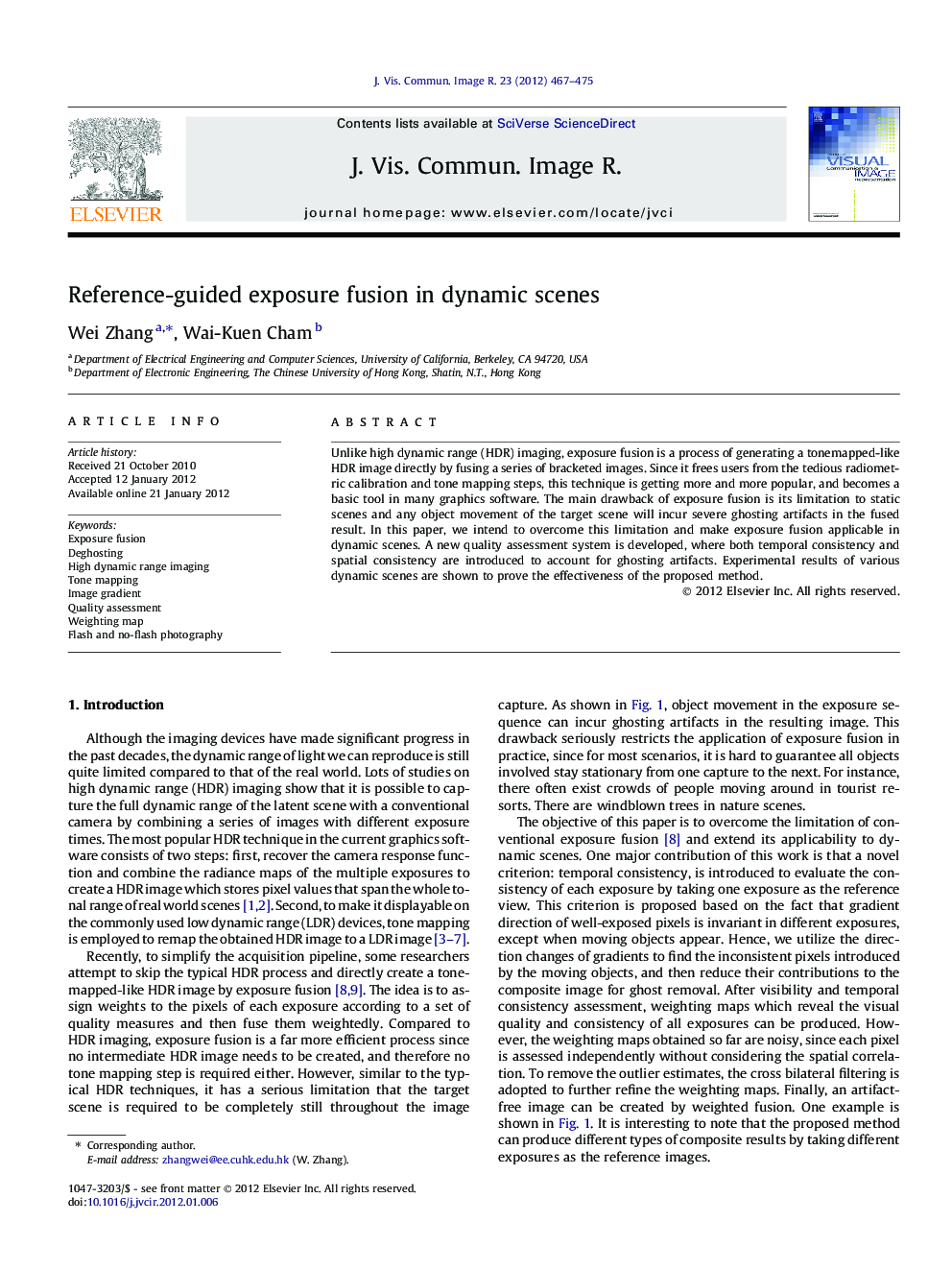| Article ID | Journal | Published Year | Pages | File Type |
|---|---|---|---|---|
| 529273 | Journal of Visual Communication and Image Representation | 2012 | 9 Pages |
Unlike high dynamic range (HDR) imaging, exposure fusion is a process of generating a tonemapped-like HDR image directly by fusing a series of bracketed images. Since it frees users from the tedious radiometric calibration and tone mapping steps, this technique is getting more and more popular, and becomes a basic tool in many graphics software. The main drawback of exposure fusion is its limitation to static scenes and any object movement of the target scene will incur severe ghosting artifacts in the fused result. In this paper, we intend to overcome this limitation and make exposure fusion applicable in dynamic scenes. A new quality assessment system is developed, where both temporal consistency and spatial consistency are introduced to account for ghosting artifacts. Experimental results of various dynamic scenes are shown to prove the effectiveness of the proposed method.
► We extend exposure fusion to dynamic scenes. ► A new quality assessment system is developed to account for ghosting artifacts. ► The proposed method is efficient and can produce different types of fusion results. ► The proposed method can be applied to flash and no-flash photography.
